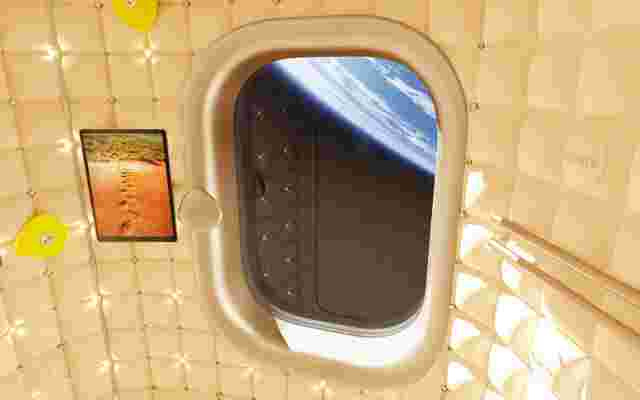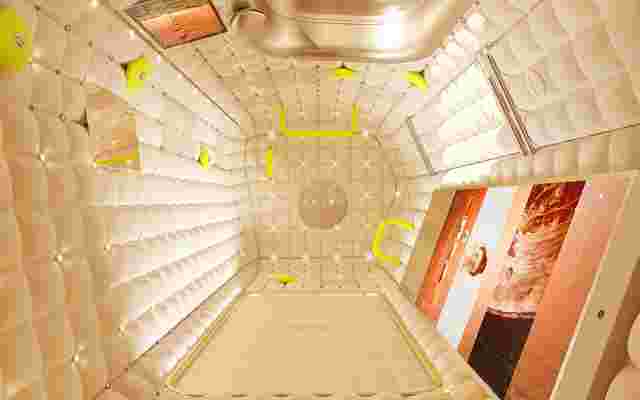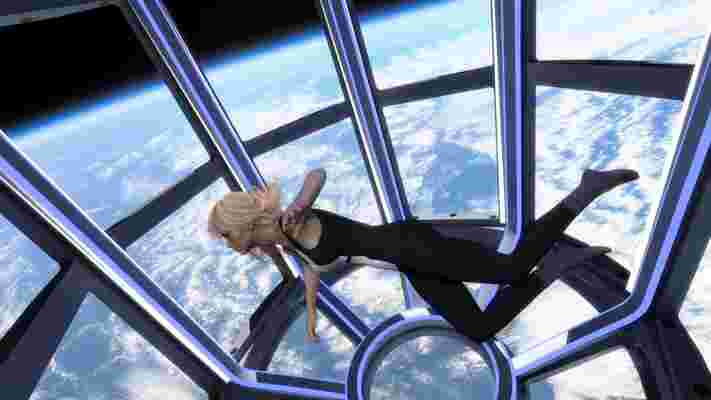Last summer marked the 50th anniversary of Apollo 11, the NASA mission that first placed our species on the moon. And while that event will remain the apogee of human achievement, we are on the verge of yet another accomplishment in the cosmos. NASA recently unveiled the design for its first-ever space modules. To complete this difficult feat, the government agency joined forces with Texas-based startup Axiom Space in creating at least one structure that would have the ability to house private citizens visiting our solar system by 2024.

A view from one of the living quarters, which features LED lighting and touch screens.
To design the interiors of each unit, NASA and Axiom turned to French-born designer Philippe Starck. The 71-year-old virtuoso has made a career of designing an eclectic range of products (including watches and yachts). But it’s his most recent design, which will house private citizens in outer space, that will allow us to witness the furthest reaches of his imagination. According to Starck’s website, the design will be “a home base for professional astronauts and private explorers.” While the prospect of ordinary people rocketing into space is exciting, the project has facets to it. The modules will provide housing to national astronauts from countries that are not currently part of the International Space Station (ISS) partnership (or those that are but do not currently receive as many flight opportunities). All Axiom flights to outer space will be commanded by professionally trained astronauts. What’s more, any government or person that pays the cost of the flight (which has been reported to be at least $35,000) and passes a basic physical examination may board a flight. Prior to the launch, however, private citizens will be trained by Axiom professionals at its facilities in Houston. The trips will last roughly 10 days, with eight of them spent aboard the ISS.

The space has handlebars for ease and safety in movement throughout the compartments.
“Our goal was not to create a copy of life on earth but to create the best environment for human beings in this infinite territory,” says Starck. “My vision is to create a comfortable egg, friendly, where walls are so soft and in harmony with the movements of the human body in zero gravity.” To this end, each livable unit will be outfitted with padded walls embedded with touch screens and LED lights, as well as handrails for navigating oneself in zero gravity. The current plan calls for the space homes to be attached to the ISS, with the goal of eventually having a cluster of homes branching off and turning into self-sustaining structures.

There is a section of the spacecraft that allows for nearly uninhibited views of outer space.
Perhaps the most appealing part of living within one of these space modules is the views afforded from within. Each module will be fitted with large windows, allowing for unparalleled views of Earth and beyond. Some of the convenience of conventional life will be on board the space module, including high-speed Wi-Fi.
A rendering shows how Axiom’s space station would appear when it is no longer attached to the ISS.
Wi-Fi aside, there will be nothing easy in creating a module in outer space. “A space station is ruled by a fundamental law: zero gravity. And it changes everything,” explains Starck. “Life on Earth is held down by gravity, but life in space is a multidirectional freedom: There is no horizontal, no vertical, even no diagonal. And functions are new, sometimes unknown. At the same time, it is a difficult place, with difficult rules, but it also gives an infinity of solutions.”
If we ever wondered whether Starck was up for the task of creating private modules in outer space, the answer was always there, hidden in plain sight: The description of his website reads, “Enter Philippe Starck’s universe.” Construction of the first modules will begin this year.
